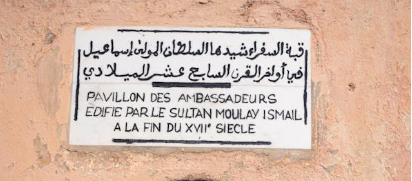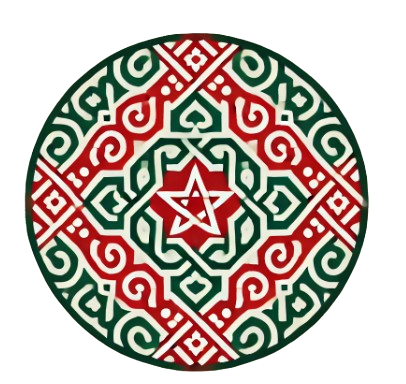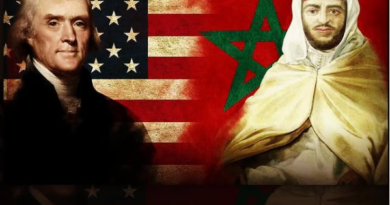A Rich and Complex History: Morocco Under the Sultans
💡 Moroccan history under the sultans is a story of power, strategy, and social complexity. The harem, often reduced to a stereotype, represents a multifaceted institution that played a vital role in the politics and culture of the era. Understanding this period requires moving beyond clichés to embrace the richness and diversity of its dynamics.
The history of Morocco is a complex tapestry where power, culture, and the private lives of sultans intertwine to form a captivating narrative. From the arrival of Moulay Idriss to more recent dynasties, the Cherifian Kingdom has been shaped by iconic figures and unique institutions, notably the imperial harem. Often misunderstood, the harem played a central role in state affairs while reflecting the social norms and political strategies of each era.
The Sultanate: An Institution of Power and Continuity
Since the establishment of the Idrissid dynasty in the 8th century, the sultanate has been the cornerstone of authority in Morocco. Beyond its political functions, it also embodied religious and social unity. Each sultan left his mark on the kingdom, consolidating power through strategic alliances, military campaigns, and administrative reforms.
Moulay Idriss, founder of Morocco’s first dynasty, symbolized the link between religion and politics. As a descendant of the Prophet Muhammad, he combined religious legitimacy with political authority, establishing a model that would be adopted by his successors.
The Imperial Harem: Between Power and Social Representation
The imperial harem is one of the most fascinating yet misunderstood aspects of Moroccan history. Contrary to the exoticized view propagated by Orientalist narratives, the harem was not merely a space of pleasure but a political and social institution. It represented the sultan’s power, his network of alliances, and his capacity to ensure a robust lineage.
The Politics of the Harem
Under Moulay Ismail (1672–1727), the harem reached unparalleled political importance. With hundreds of concubines and more than 1,000 children, the sultan used marriage as a tool to solidify his authority over local tribes and neighboring states. Each union with a woman from an influential tribe strengthened its loyalty to the throne.
Simultaneously, the children born within the harem played a strategic role. Positioned in governance roles throughout the country, they acted as extensions of central authority. This decentralized governance model, based on familial ties, underscored the importance of dynasty and continuity in Moroccan power structures.
The Role of Women in the Harem
Contrary to popular misconceptions, some women in the harem wielded significant influence. For example, Khnata Bint Bakkar, one of Moulay Ismail’s wives, stood out for her intelligence and political acumen. She played a critical diplomatic role, negotiating with foreign powers and mediating internal conflicts. Her involvement in public affairs demonstrates that women in the harem could transcend traditional roles to become key political actors.
Lalla Aisha Mubarka, a former slave who became Moulay Ismail’s favorite, is another example of the social mobility possible within the harem. She used her position to influence political decisions, showing that power within the harem was as much about competence as it was about proximity to the sultan.
Daily Life in the Harem
Life in the imperial harem was far from homogeneous. While some women lived in luxury, others led more discreet lives, often marked by isolation. The physical spaces of the harem, particularly in Meknes under Moulay Ismail, reflected the sultan’s ambition and grandeur. The lavish palaces, gardens, and fortifications showcased the central role of the harem in royal symbolism.
The harem was not merely a residence but also a meticulously governed institution. Each woman had a specific role, whether it was ensuring the sultan’s lineage or contributing to diplomatic relations. The harem’s complex operation also relied on the work of servants, advisors, and stewards.
Sultanates and Marital Alliances
Marital alliances were a key tool in the sultans’ political strategies. For example, Moulay Suleiman’s marriage to a Libyan princess symbolized strengthened regional ties. This union was celebrated with military parades, highlighting the importance of dynastic alliances in consolidating power.
However, such alliances were not always sufficient to maintain stability. Internal rivalries, tribal conflicts, and foreign interventions were constant challenges for the sultans. Ministers like Ahmed Ben Mubarak Al-Soussi, who served under Moulay Suleiman, often played decisive roles in managing these crises, sometimes assuming effective control of the government.
Myths and Realities of Moulay Ismail’s Harem
The legend of Moulay Ismail’s harem, fueled by Orientalist accounts, is a striking example of how Moroccan history has been interpreted by foreign observers. Exaggerated descriptions by European travelers, such as Dominique Busnot, painted the harem as a space of limitless indulgence and debauchery. These narratives, shaped by Western fantasies, fail to reflect the reality of this institution.
In truth, Moulay Ismail’s harem was a structured and hierarchical space, serving both political and social purposes. Its vast size, with numerous concubines and children, symbolized the sultan’s power and his ability to dominate both his kingdom and his alliances.
Recommendations for Further Exploration
To enrich this analysis and deepen the understanding of Moroccan history under the sultans, several additional topics could be explored:
- Diplomatic Relations and the Role of Women:
- Study the contributions of women in the harem to international relations, especially through marriages or direct negotiations with foreign powers.
- Orientalist Narratives and Their Impact:
- Compare Western depictions of Moroccan harems with Moroccan archives to identify discrepancies and their implications.
- The Role of Servants and Eunuchs in the Harem:
- Analyze the structure of the harem’s staff, highlighting the role of eunuchs as intermediaries of power.
- The Architecture of Imperial Harems:
- Examine the physical spaces of harems, such as those in Meknes and Fes, to understand their symbolism and role in daily life.
- Comparison with Other Islamic Dynasties:
- Contrast the Moroccan harem model with those of other Muslim empires, such as the Ottomans or Mughals, to highlight Morocco’s unique characteristics.
- Modern Perceptions of the Harem:
- Explore how the legacy of the harem is perceived in contemporary Morocco and its influence on current debates about gender and politics.
- The Fate of Harem Children:
- Analyze the lives of harem-born children, particularly those who rose to administrative or military prominence.
Myth and Reality in the Traditions of the Makhzen and Ceremonies in Morocco
The Makhzen, an ancient and complex institution, embodies Morocco’s central authority and its unique relationship with society. Historically, the term referred to the administration and officials responsible for governing the kingdom, but it also became a symbol of royal power, blending traditional rites, administrative practices, and political representations. Over the ages, the ceremonies and traditions of the Makhzen have reflected a balance between historical continuity and adaptation to change, often oscillating between myth and reality.
The Makhzen: An Ancient Institution
The origins of the Makhzen can be traced back to Morocco’s medieval dynasties when it referred to the kingdom’s treasury, managed by a bureaucratic structure. Over time, it evolved to encompass the state apparatus, becoming the executive arm of royal power.
Under the sultans, the Makhzen was organized into two main dimensions:
- Central administration, consisting of ministers and advisors, often drawn from urban or tribal elites.
- Local administration, represented by caïds, pashas, and governors, tasked with maintaining order and collecting taxes.
This dual structure allowed the Makhzen to mediate between the central authority and the various components of Moroccan society, including tribes, religious brotherhoods, and urban elites.
Rituals of the Makhzen: Myth and Reality
The power of the Makhzen is supported by a series of rituals and ceremonies that, beyond their symbolic significance, reinforce the legitimacy and continuity of royal authority. These traditions, sometimes perceived as mystical or exotic by foreign observers, often rest on well-defined political and social realities.
The Bay’a: The Pledge of Allegiance
The Bay’a, or pledge of allegiance, is one of the Makhzen’s most emblematic rituals. During this ceremony, representatives of tribes, elites, and institutions pledge allegiance to the sultan (today the king), symbolizing the unity of the kingdom around its central figure.
Deeply rooted in Islamic tradition, this ritual reinforces the sovereign’s spiritual and political legitimacy. While some critics view it as mere formality or a demonstration of power, the Bay’a remains a pivotal moment where sovereignty and dynastic continuity are publicly affirmed.
Religious Ceremonies
Religious ceremonies are another essential facet of Makhzen traditions. Celebrations surrounding the Mawlid (the Prophet’s birthday), Ramadan, and Eid al-Adha (the Feast of Sacrifice) highlight the king’s role as “Commander of the Faithful” (Amir al-Mouminine). On these occasions, the king participates in public prayers and acts of charity, underscoring his role as a spiritual leader and protector of the faith.
While heavily ritualized, these events reflect profound social realities. They emphasize the inseparable link between religion and politics in Morocco, where the king is not only a head of state but also a spiritual figure.
Fantasias and Equestrian Parades
Fantasias, spectacular displays of horsemen in traditional attire, are another example of traditions tied to the Makhzen. These parades, often held during major occasions or to welcome the sovereign, symbolize tribal loyalty to the central authority. They also celebrate Morocco’s warrior and tribal heritage while providing a spectacle that enhances the king’s prestige.



The Myth of Makhzen Traditions
Certain traditions associated with the Makhzen have been exaggerated or mythologized, particularly by external observers who often interpreted them as archaic practices or manifestations of despotic power. This myth was partly constructed through Orientalist accounts, which viewed these ceremonies as a mix of exoticism, mysticism, and domination.
- European Perception: Western travelers in the 19th century often described the Makhzen as an authoritarian apparatus, associating its ceremonies with a theater of power intended to intimidate. While exaggerated, this perspective reflected a misunderstanding of the political and social subtleties of these traditions.
- The Role of Legends: Stories of hidden Makhzen treasures or the ostentatious wealth of its ceremonies also fed into the myth. In reality, these rituals were often driven by economic and social considerations, designed to affirm sovereignty in a context of ethnic and tribal diversity.
Political and Social Realities
Behind the rituals and traditions of the Makhzen lie complex political and social realities:
- Managing Tribal Alliances: Ceremonies such as the Bay’a or fantasias served to maintain cohesion between the central authority and the tribes. In a country marked by significant ethnic diversity, these events played a crucial role in easing tensions and strengthening alliances.
- Centralizing Power: The traditions of the Makhzen also served to consolidate central authority by imposing symbols of loyalty and respect. This centralization, while effective, was sometimes contested by tribal or religious movements.
- Adapting to Modern Times: While some traditions may seem immutable, they have evolved over time to meet the expectations of contemporary Moroccan society. For instance, the Bay’a, once a purely tribal act, is now a national event broadcast on television.
Recommendations for Further Exploration
To enrich the analysis of Makhzen traditions and ceremonies in Morocco, the following areas could be explored:
- Studying the Historical Evolution of the Makhzen: Trace the transformations of this institution from medieval dynasties to the modern era, highlighting its administrative and symbolic functions.
- Analyzing Cultural Influences: Explore how Makhzen traditions have been influenced by Andalusian, Ottoman, or Sub-Saharan practices, reflecting Morocco’s unique geographical and cultural position.
- Examining the Role of Religious Brotherhoods: Study their role in Makhzen ceremonies, particularly in legitimizing the sovereign’s spiritual authority.
- Comparing with Other Islamic Monarchies: Draw parallels between Makhzen traditions and those of the Ottomans or Mughals to emphasize Morocco’s distinct characteristics.
- Exploring Contemporary Perceptions: Analyze how these traditions are perceived by younger generations in Morocco and their role in shaping national identity.
- The Role of Art and Music: Study the artistic dimension of Makhzen ceremonies, including Andalusian music, traditional costumes, and equestrian arts.




